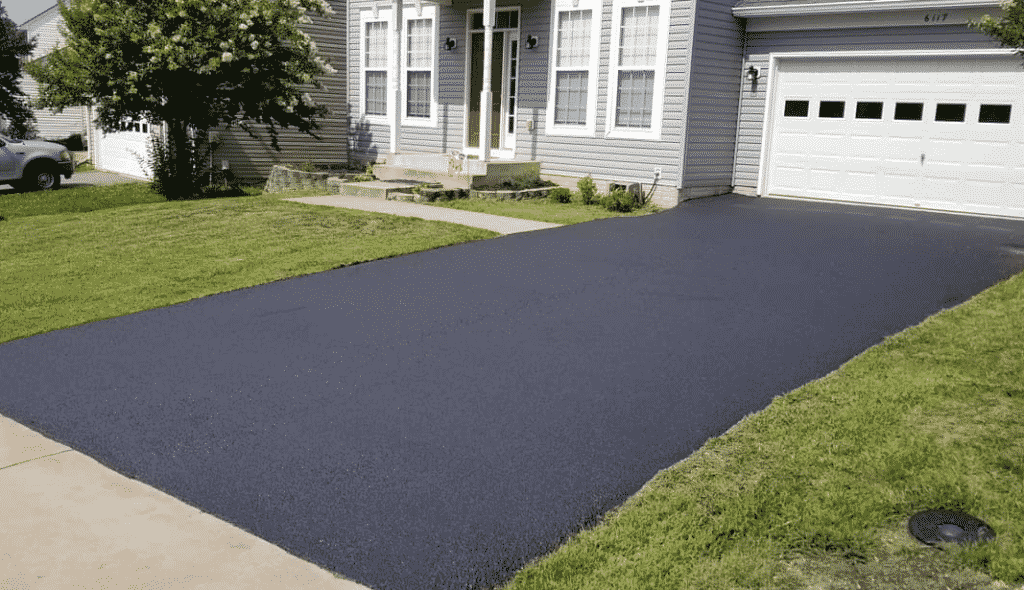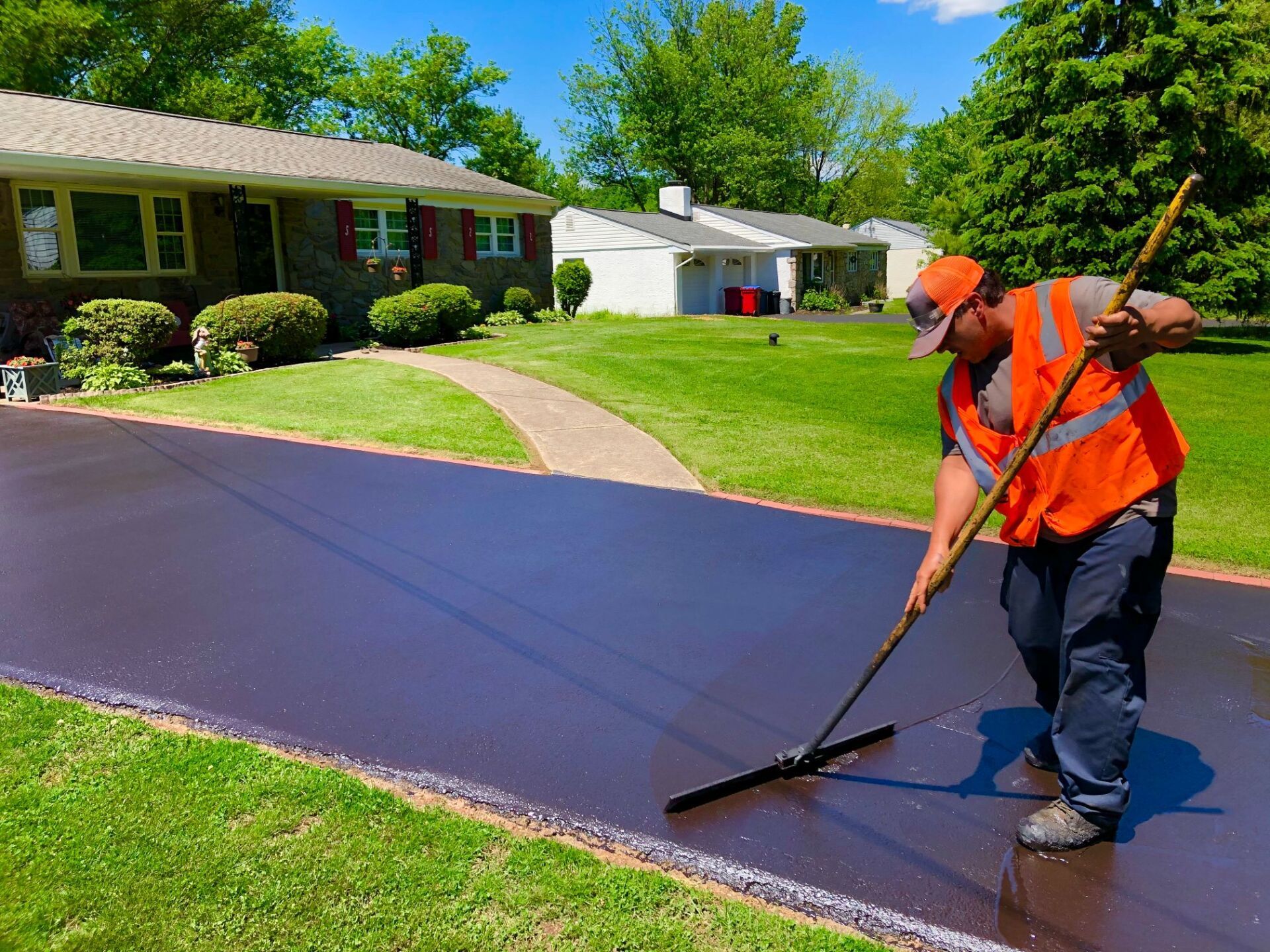Boost Commercial Allure: Warm Mix Asphalt Sealing for Angled Parking Lots
Boost Commercial Allure: Warm Mix Asphalt Sealing for Angled Parking Lots
Blog Article
Hot Mix Asphalt: A Sustainable Service for Pavement
Hot Mix Asphalt (HMA) has actually become a leading lasting choice for sidewalk options, supplying a myriad of ecological advantages and innovative technologies. Its capacity to reduce and recycle products power intake provides a compelling instance for its adoption in road building and construction jobs. Furthermore, the long-term efficiency and sturdiness of HMA make it a favored option for framework growth. As the need for eco-friendly building and construction techniques expands, checking out the nuances of HMA's sustainability can give beneficial insights right into the future of sidewalk services.
Ecological Advantages of Warm Mix Asphalt

In Addition, Warm Mix Asphalt helps to alleviate urban warm island impacts. Its dark shade takes in sunshine, lowering the quantity of warm mirrored back into the atmosphere compared to lighter-colored sidewalks. This can reduce ambient temperatures in urban areas, decreasing the need for a/c and inevitably decreasing power intake.
On top of that, Hot Mix Asphalt contributes to enhanced stormwater monitoring. Its permeable nature permits water to reenergize and infiltrate the pavement groundwater materials, lowering drainage and the danger of flooding. These environmental benefits make Warm Mix Asphalt a lasting selection for leading freeways and roads.
Energy Efficiency in HMA Production
Is energy effectiveness a crucial consider the production of Hot Mix Asphalt (HMA)? Absolutely. Energy plays a considerable function in the production of HMA, affecting both cost and ecological sustainability. One key facet of power performance in HMA manufacturing is making use of warm mix asphalt (WMA) modern technologies (angled parking). WMA allows for the blending and positioning of asphalt at reduced temperatures compared to conventional hot mix asphalt, resulting in lowered energy usage during production. This process not just lowers gas usage but also reduces greenhouse gas exhausts, making it a more eco pleasant alternative.
Furthermore, innovations in plant innovations have led to even more energy-efficient HMA production procedures. Modern plants are designed with features like recycled asphalt sidewalk (RAP) processing capacities, effective burner systems, and enhanced insulation, all contributing to energy savings. By maximizing energy use in HMA production, the market can decrease its carbon footprint while preserving high-quality sidewalk products. Energy performance is, therefore, a crucial consideration in making certain the sustainability of Hot Mix Asphalt manufacturing.
Recyclability of Hot Mix Asphalt
The recyclability of Hot Mix Asphalt (HMA) is a critical element of its sustainability and lasting environmental impact. HMA is among one of the most recycled products in the USA, with over 100 million lots of redeemed asphalt pavement (RAP) being recycled annually in new pavement building. Reusing HMA supplies numerous ecological advantages, such as reducing the need for virgin products, lowering power consumption throughout production, and decreasing the amount of waste sent out to garbage dumps.
The procedure of reusing HMA involves crushing the existing pavement, squashing it right into smaller sized pieces, and mixing it with new aggregate and asphalt binder to produce a recycled mix. This recycled mix can typically carry out in addition to or perhaps far better than traditional HMA, while calling for less resources and generating reduced greenhouse gas exhausts. By incorporating RAP right into brand-new pavement projects, roadway agencies can preserve natural resources, reduce costs, and minimize the ecological impact of roadway building and maintenance activities. In general, the recyclability of HMA plays a significant role in advertising lasting methods within the pavement industry.

Long-Term Performance of HMA
Asphalt pavements show sturdiness and strength over an extensive duration, showing the lasting efficiency of Warm Mix Asphalt (HMA) The durability of HMA can be credited to its capacity to hold up against rush hour lots, rough climate condition, and the impacts of aging. Research studies have shown that well-designed and effectively created HMA sidewalks can last for 20 years or more with regular maintenance. The key to optimizing the long-term performance of HMA exists in utilizing premium products, adhering to finest techniques in building and construction, and implementing effective upkeep methods. Correct water drainage, routine examinations, and timely fixings are essential for protecting the architectural honesty of HMA pavements gradually. In addition, innovations in HMA modern technology, such as the usage of polymer-modified binders and warm mix asphalt, have additionally enhanced the toughness and longevity of HMA sidewalks. By prioritizing top quality building and upkeep techniques, HMA remains to confirm itself as a cost-effective and sustainable service for resilient pavement framework.

HMA: Resilience and Sustainability
Demonstrating both sturdiness and sustainability, Warm Mix Asphalt (HMA) has actually come to be a keystone in the building and construction of long-lasting sidewalk infrastructures - angled parking. HMA's toughness originates from its capacity to hold up against heavy loads, severe weather condition problems, and useful site high website traffic quantities, making it a trusted option for highways, highways, and airport terminal runways. The composition of HMA, which usually includes accumulations, binder, and filler, plays an essential function in improving its durability and resistance to put on and tear
Furthermore, HMA's sustainability hinges on its recyclability and energy-efficient manufacturing process. The ability to reuse reclaimed asphalt pavement (RAP) in brand-new advice HMA mixes decreases the demand for virgin materials and decreases the ecological impact of sidewalk construction and maintenance. Furthermore, the power efficiency of generating HMA hinges on its reduced blending temperatures contrasted to various other pavement materials, leading to reduced power intake and greenhouse gas exhausts.
Conclusion
In final thought, warm mix asphalt (HMA) provides a lasting solution for sidewalk with its environmentally friendly features. HMA's recyclability, energy effectiveness in production, and long-lasting resilience make it an eco-friendly selection for road construction.
HMA is one of the most recycled products in the United States, with over 100 million tons of recovered asphalt pavement (RAP) being recycled annually in brand-new pavement construction.The process of reusing HMA involves crushing the existing sidewalk, squashing it into smaller items, and blending it with brand-new accumulation and asphalt binder to develop a recycled mix.Asphalt pavements demonstrate sturdiness and strength over an extensive duration, showing the lasting efficiency of Hot Mix Asphalt (HMA) Furthermore, improvements in HMA modern technology, such as the use of polymer-modified binders and cozy mix asphalt, have actually further improved the longevity and longevity of click to read more HMA pavements. The capability to reuse recovered asphalt sidewalk (RAP) in brand-new HMA combinations minimizes the demand for virgin materials and reduces the environmental effect of sidewalk building and construction and maintenance.
Report this page